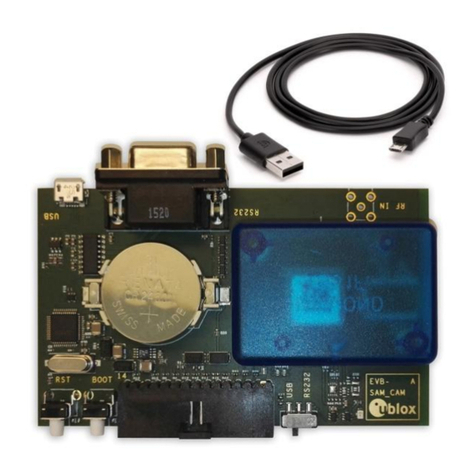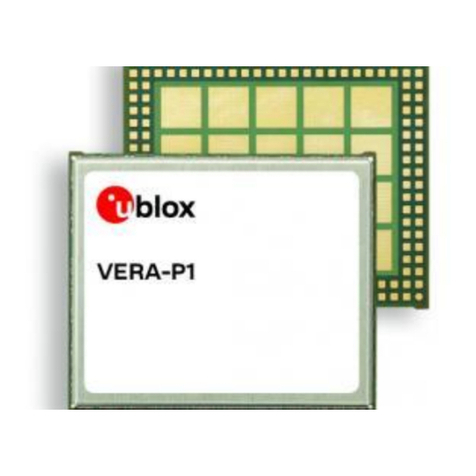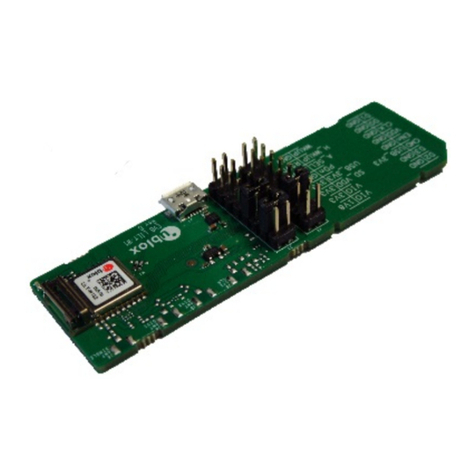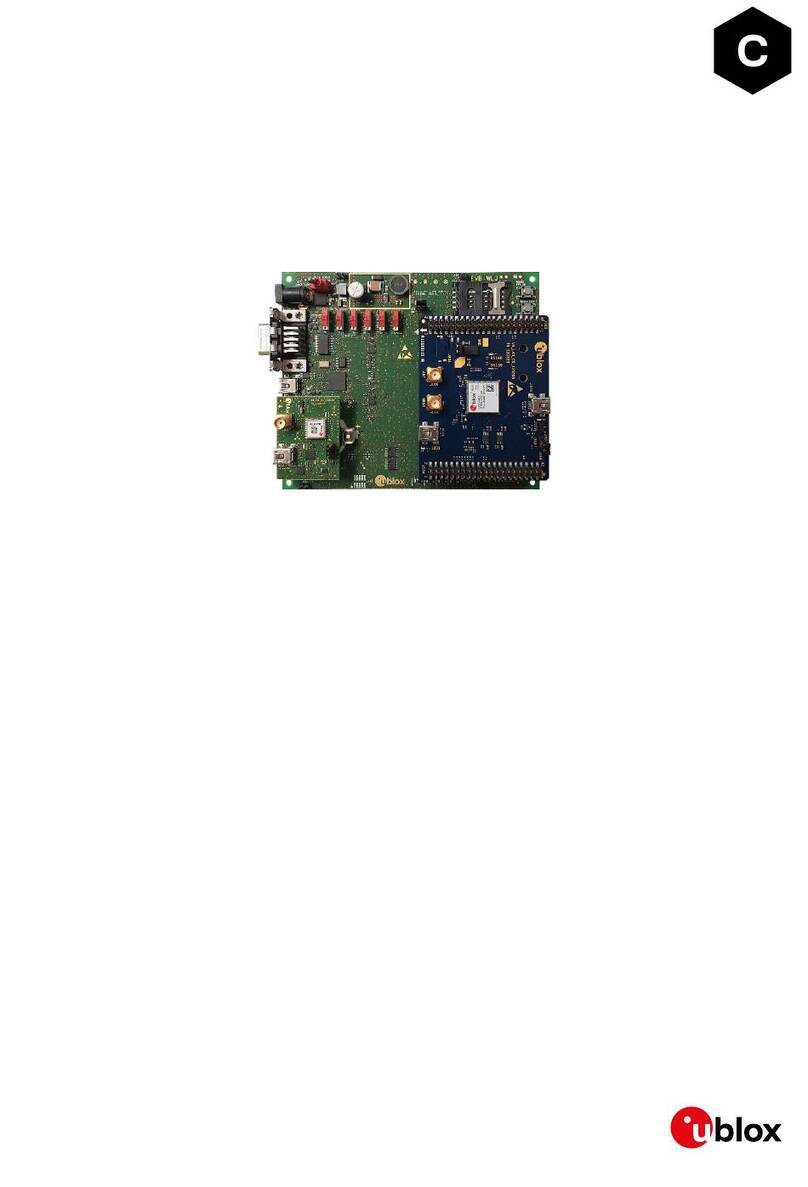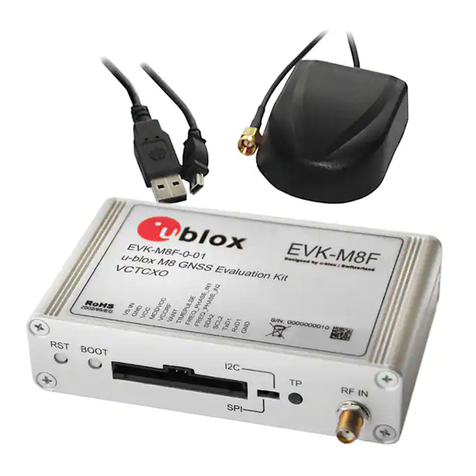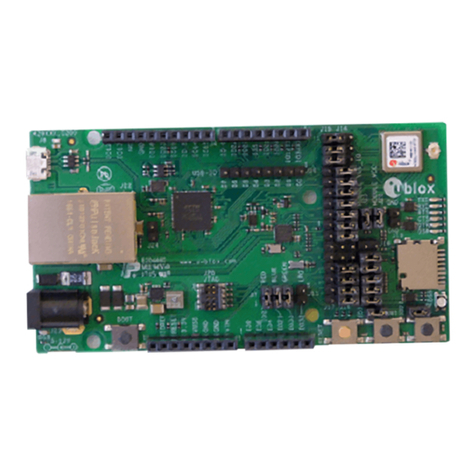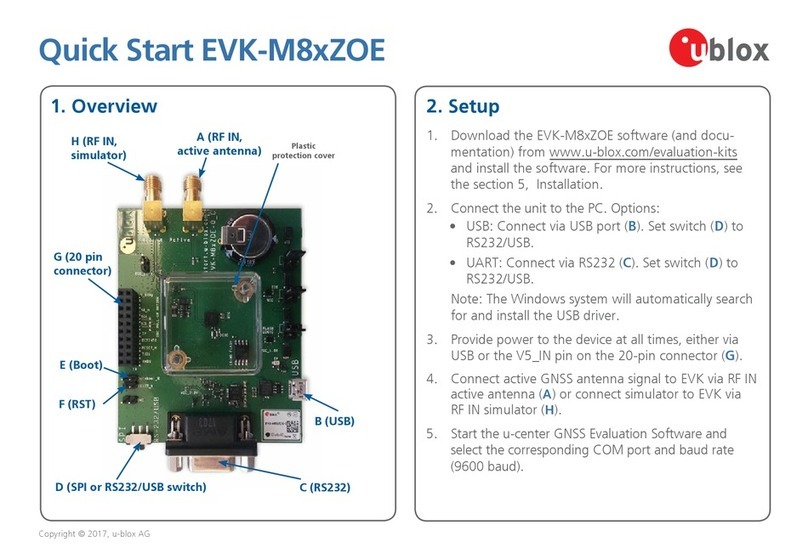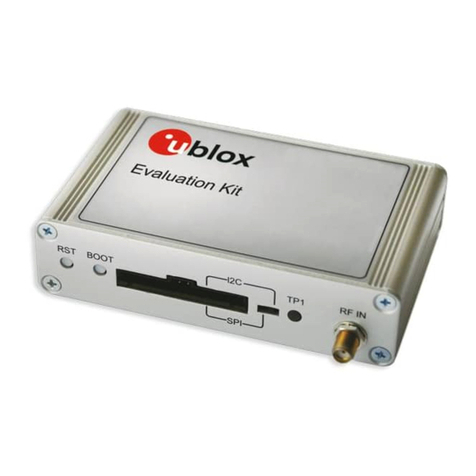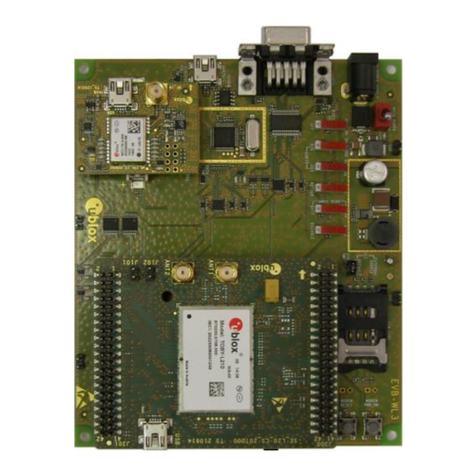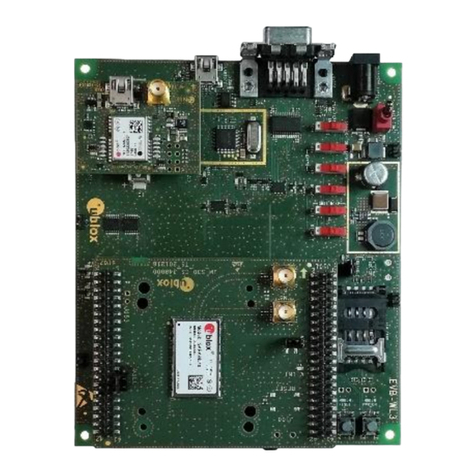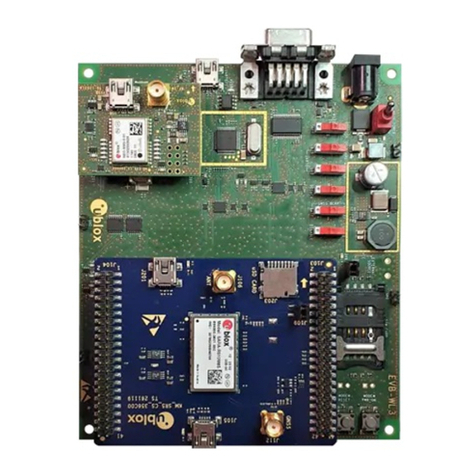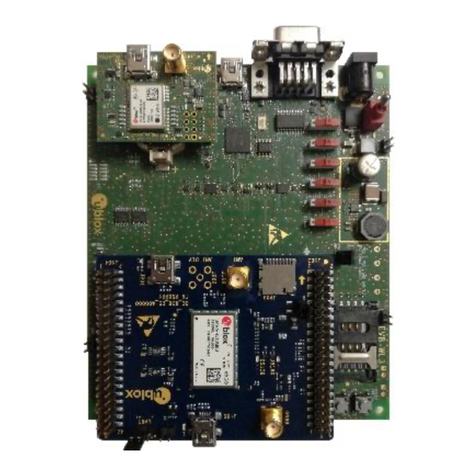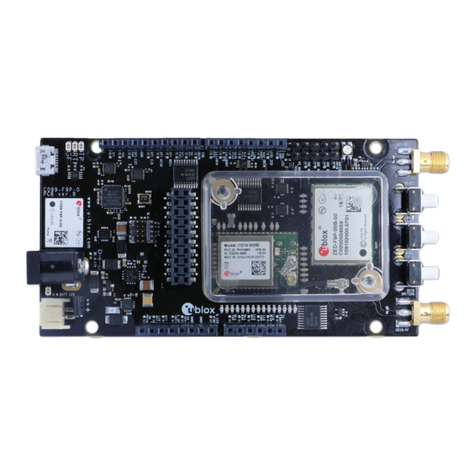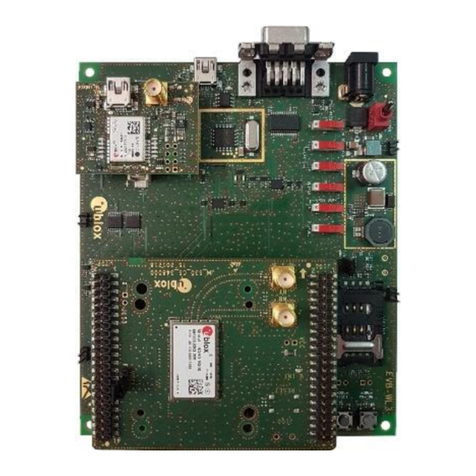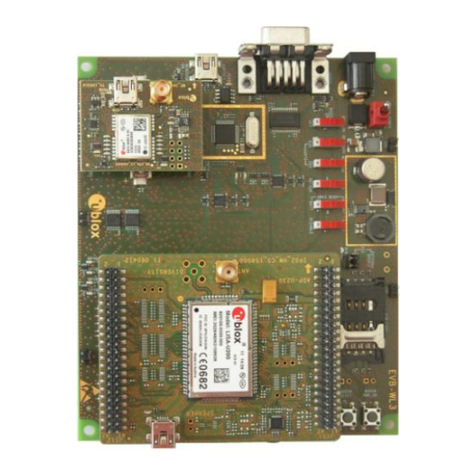
EVK-M8U User Guide
UBX-15023994 - R01 Advance Information Contents
Page 4 of 26
Contents
Preface ................................................................................................................................3
Using this guide............................................................................................................................................... 3
Warnings and certifications ............................................................................................................................. 3
Contents..............................................................................................................................4
1Product description ......................................................................................................6
1.1 Overview .............................................................................................................................................. 6
1.2 Kit includes........................................................................................................................................... 6
1.3 Evaluation software .............................................................................................................................. 6
1.4 System requirements ............................................................................................................................ 6
2Specifications................................................................................................................7
3Device description........................................................................................................8
3.1 Interface connection and measurement ................................................................................................ 8
3.2 Active antenna ..................................................................................................................................... 8
3.3 Evaluation unit...................................................................................................................................... 8
3.3.1 Antenna connector ....................................................................................................................... 8
3.3.2 USB ............................................................................................................................................... 9
3.3.3 UART............................................................................................................................................. 9
3.3.4 RST button .................................................................................................................................... 9
3.3.5 Safe boot button........................................................................................................................... 9
3.3.6 Slide Switch................................................................................................................................... 9
3.3.7 Front test Connector ................................................................................................................... 10
3.3.8 LED ............................................................................................................................................. 10
3.3.9 Backup Battery ............................................................................................................................ 10
3.3.10 GNSS Configuration .................................................................................................................... 11
4Setting up ...................................................................................................................11
4.1 EVK-M8U installation.......................................................................................................................... 11
4.1.1 Mounting the GNSS antenna....................................................................................................... 11
4.1.2 Mounting the EVK-M8U.............................................................................................................. 11
4.1.3 Connecting the cables................................................................................................................. 12
4.2 Recommended configuration.............................................................................................................. 12
4.2.1 Serial port default configuration .................................................................................................. 12
4.2.2 UDR receiver operation................................................................................................................ 12
4.3 Accelerated initialization and calibration procedure ............................................................................ 14
5Test drives...................................................................................................................15
6Measuring tracking current .......................................................................................16
